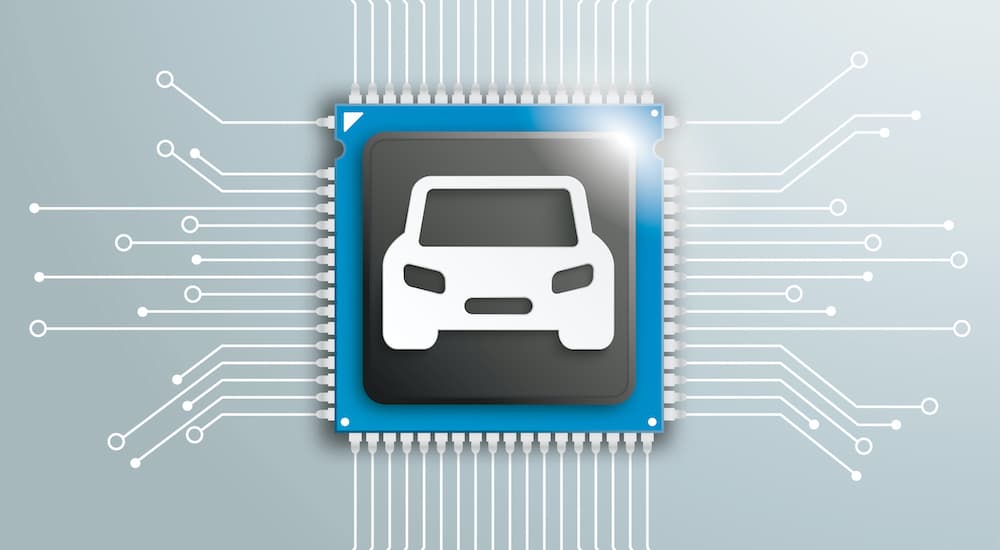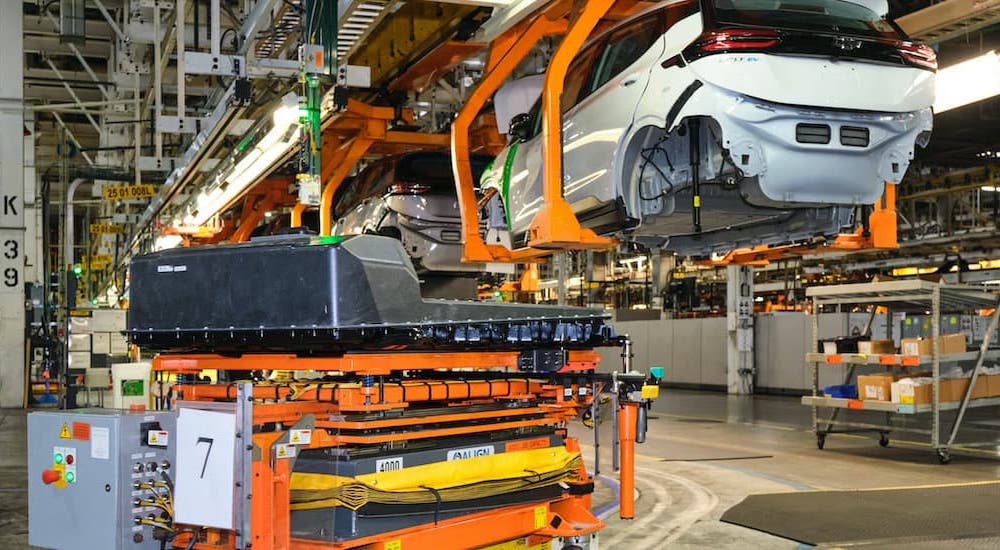Some people within the auto industry want to act like the chip shortage isn’t that big a deal; after all, Ford’s chief financial officer, John Lawler, recently said, “…we could see it bleeding into the first part of next year.” That seems like a pretty optimistic take, and it’s funny to me that the auto industry has been downplaying this shortage from the very start. A few months ago, they were quick to say it wouldn’t be a big issue while at the same time preparing for shutdowns at their factories.
The reality is that it’s a massive issue that’s just getting worse, not better – no matter how much the executive officers of companies like Ford wish it was otherwise. This is already evident by the significant number of shutdowns that have occurred with production, along with contingency plans that include the idea of shipping incomplete cars to dealerships. If that’s not an idea that immediately screams, “We don’t know what to do!” then I don’t know what is. But here’s the reality: this chip shortage still hasn’t gotten as bad as it might get…
Quick Recap: How We Got Here
Just in case you’re out of the loop with this whole “chip shortage” thing, here’s a brief recap. Silicon microchips – also just called “microchips” or “chips” – are used in pretty much all computers and similar devices. With huge tech innovations in the auto industry over the last couple of decades, these chips are used in multiple systems by vehicles. So cars today need quite a few of them to actually function.
Last year, as COVID started to first escalate, car manufacturers were worried about production, so they reduced their orders for these chips. What happened, however, was that the industry had a huge year and a lot of cars sold, so they needed to up production. By the time the auto industry realized this, however, there was already a shortage of chips due to factories closing down for pandemic reasons. So now, there aren’t enough chips to go around, and it takes a long time to get these microchips made – so there’s a massive, worldwide shortage across numerous industries.
How’s the Chip Shortage Hitting the Auto Industry
If you just look at profits, it would seem like the auto industry is doing just fine. Their sales are still up from the boom last year, and major manufacturers like Ford and GM have been posting record quarters with fantastic sales across the board. Nissan made a profit in its first quarter of the year, and in general, things look good – as long as you’re only looking at profits right now.
The reality, however, is that things are about to get much worse. That’s because these companies are selling vehicles they’ve already made, and they’ve been switching their focus to their most popular vehicles to utilize the limited number of chips they have. But, at the same time, more than a dozen manufacturing plants in the US and Europe have had to shut down, at least temporarily, over the last month or so. GM, Ford, Tesla, BMW, and others have all had to shut down factories because they don’t have chips to put in vehicles.
Even when factories have stayed open, they’ve been building cars without chips – waiting for when they get them. Ford has even talked about shipping these vehicles to dealerships, where they’ll sit until chips can be sent and installed at the dealer. While profits have been high so far, there’s a brick wall down the road that the industry is going to hit as soon as they run out of the cars they’ve made and lack chips to make more in meaningful numbers.
Nissan has said they expect to make 500,000 fewer vehicles this year than they first predicted due to the chip shortage. Ford, GM, and others are similarly going to be making fewer vehicles – as an industry; the estimate right now is that nearly 4 million fewer cars will be made this year than was expected. That’s going to be what the second half of this year looks like, in terms of new cars available at dealerships.
Bad Sign: The Smartphone Industry Is Getting Hit
Unfortunately for the auto industry, things are actually going to get worse for them. When they reduced their orders for chips last year, other industries were quick to act and stockpile what they had or boost their orders for more chips. The smartphone industry, for example, never reduced its orders for microchips, but now they’re starting to run low on their supplies.
This is going to be potentially catastrophic for the auto industry because smartphone companies use far more chips than automakers. For example, Apple by itself buys more microchips than every auto manufacturer combined – Samsung has similar buying power. Now, those companies are starting to run low, and the chip shortage is finally impacting them, which means they’re going to leverage that massive buying power to stay at the head of the line when chips are made. So this could easily impact the auto industry in unforeseen ways, as chip manufacturers struggle to keep up with the demands of major players like Apple and Samsung and ignore the needs of smaller companies (from their perspective) like GM and Tesla.
Realistic Views of the Future
While Ford’s CFO is busy talking about how he “could see this bleeding into the first part of next year,” others are far less optimistic. The chief executive at Intel, Pat Gelsinger, has recently said that he predicts the shortage will get worse in the second half of this year and that it will be “a year or two” before chip supplies return to normal. Considering the source, I’m much more inclined to listen to what the head of Intel is saying about microchips and what the market for them is going to look like.
From the very beginning, the auto industry’s executives have been trying to downplay this chip shortage as much as possible since they don’t want it to impact their profits. But the reality is that it has been a huge problem for them in terms of production, and that’s not about to change. It will definitely “bleed” into next year, and it could very well be a problem all the way into 2023, or at least the end of 2022.
Things to Look Forward To: The Battery Shortage
Just in case you’re sick of hearing about this whole “chip shortage” thing, and you’re looking for the next crisis to worry about, I’ve got you covered. According to a recent report by Forbes, just around the time the chip shortage ends, we have a battery shortage to look forward to. Right now, the Center for Automotive Research predicts that about 8 million cars will ultimately not be produced due to this chip shortage, but they’re predicting that more than 18 million might be left unmade in the decade ahead due to an inevitable shortage of battery cells.
All of this points to a number of serious issues that need to be addressed for the future of the auto industry to be as good as it should be. These kinds of shortages in high-tech hardware should be foreseeable and planned for, but at the moment, it’s factory workers and customers who are really paying the price for the lack of foresight. There’s work being done – Intel is building two new factories to produce microchips, various companies are working on methods for recycling EV battery cells – but whether it’s happening fast enough or not is up for debate.






